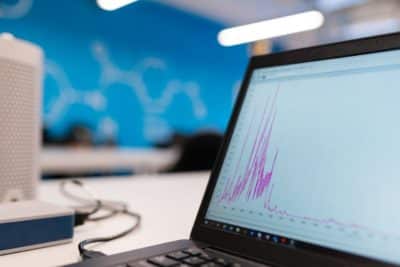Can IT solutions save lives? Yes – by reducing the cost of treatment, making it possible to predict outbreaks of epidemics, or generally improving the quality of citizens’ lives. What are the technologies used in healthcare nowadays?
IMAGE: PEXELS
Big Data In Healthcare
Healthcare is, in a way, a business like any other. Its providers face many challenges – one of them is collecting and processing a vast amount of medical data in order to perform services and develop new business strategies. Patient data may be used in various ways – to plan further treatments, prevent epidemics, or reduce care costs.
Those are all sensitive data, so they have to be not only stored and processed but also properly secured. Today we can have an online appointment with a doctor and get a prescription without leaving home. Those are only two examples of technology used in medicine, and there are many more of them.
Consulting and service companies specializing in Big Data and Cloud Platforms, such as DS Stream, perceived a need for Big Data solutions for Healthcare businesses and now focused on developing Big Data and Healthcare Analytics that could save people.
Electronic Health Records
EHRs might be one of the most important technologies invented so far. Imagine that you are taken to the hospital from an accident. No standard tests (e.g., a blood test) need to be done; doctors don’t have to contact your family to know what medications you are taking or if you have any allergies or have had any operations in the past – it is all written in your own digital record. This is all in the future, of course, but such databases already exist and can be available to care providers – private and public.
Today EHSs have one big advantage – doctors don’t have to deal with unnecessary paperwork, and they save a lot of time during diagnosis. Patients also benefit from this solution because they receive reminders when they should get new lab tests or a new prescription.
Patient Predictions Used To Prevent Staffing Problems
You felt sick, went to a doctor, and… waited for hours in the queue? This has happened to many of us when visiting a public clinic. Managing medical staff has always been a challenging task. Why? If the manager puts too many employees on duty, there’s a risk of unnecessary labor costs, but if too few workers are called, customer experience (patients’ satisfaction) can be lower. Poor customer service outcomes in this industry may be fatal for patients’ health.
Some hospitals and clinics use their data to predict how many patients can be expected to visit each hospital or clinic. Time series analysis techniques make it possible to see patterns in admission rates. Then Machine Learning can be used to predict the future possible need for medical services with the most accurate algorithm.
Such analysis lets clinics prepare not only for specific days but also for selected time-slots. Thanks to that technology, the proper number of employees can be put on duty when a large number of patients are expected to arrive at the clinic.
IT At War With Cancer
Cancer is not yet a completely curable disease. Can IT do something about it? We’ll see in the future what the results of this battle are, but for now, we can be sure that IT experts are doing their best. Scientists are using data analytics to evaluate different treatments and search for the correlations between factors that can potentially cause cancer.
Such analytic technologies are also used to find the treatments with the highest rate of success. Some data research has already led to some unexpected medical successes – like finding out about Desipramine, an antidepressant now used in curing certain types of lung cancer.
Preventing Drug Abuse
Some Big Data technologies have come up with algorithms to predict if someone is at risk of getting addicted to drugs. The second, even more difficult, the challenge is to prevent at-risk patients from developing a drug addiction. Still, the existence of such analytic tools gives hope for reducing the number of deaths caused by addictions.
IT Can Do Wonders With Data
The above-described solutions are just a few examples of how Big Data is improving medical services. Patients’ data is a powerful tool that can be used by healthcare providers to lower the costs of running clinics, predict and cure illnesses, and enhance hospital management. No one should ignore Big Data’s potential to transform the healthcare industry.
If you are interested in even more technology-related articles and information from us here at Bit Rebels, then we have a lot to choose from.


COMMENTS